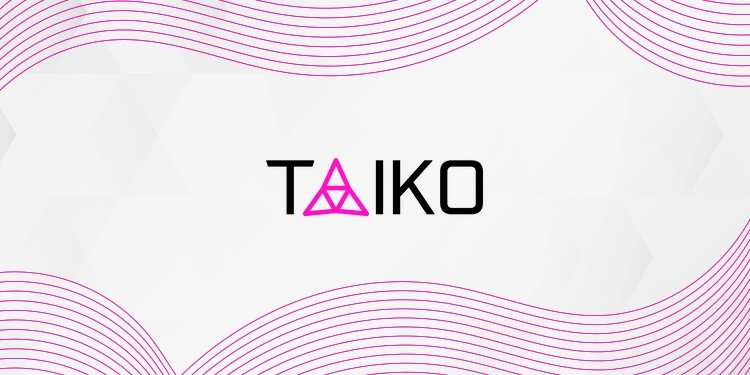Introduction
Arbitrum is a suite of technologies designed to scale Ethereum and enable faster and cheaper transactions. It consists of two protocols built with the Arbitrum Nitro tech stack: Arbitrum One, an Optimistic Rollup chain, and Arbitrum Nova, an Arbitrum AnyTrust chain. The project was launched in 2021 by Offchain Labs and features the $ARB token, an ERC-20 governance token that enables holders to participate in the Arbitrum DAO’s on-chain governance protocol. In this review, we will examine the technology suite’s innovation, architecture, code quality, product roadmap, usability, and team.
Innovation
Arbitrum‘s Nitro technical stack is its most innovative feature, providing an Ethereum-compatible chain that supports smart contract applications deployed in Ethereum Virtual Machine (EVM) code. Nitro’s use of WebAssembly (Wasm) instead of AVM for low-level instructions makes it unique. Additionally, Arbitrum Orbit, a path for launching new Layer-3 chains, allows users to customize and build L3 chains with the Nitro core for application-specific needs. Arbitrum is also the first EVM rollup chain to achieve decentralization with its DAO governance protocol, making it a leader in trustless blockchain technology.
Architecture
Arbitrum Nitro is the technical stack powering all Arbitrum products. It runs Geth at its core, providing closer EVM compatibility and advanced calldata compression. Nitro provides an Ethereum-compatible chain that supports smart contract applications deployed in EVM code, and Nitro nodes support the same API as common Ethereum nodes. Arbitrum One is an Optimistic Rollup Chain running on Ethereum mainnet, providing L1-level trustlessness, while Arbitrum Nova is an Arbitrum AnyTrust Chain running on Ethereum mainnet with lower network fees and managed data availability.
Code Quality
Arbitrum has excellent code quality, well maintained and regularly updated by an experienced development team. The code has been audited by several independent firms, including ConsenSys Diligence, Trail of Bits, and Runtime Verification, which gave it high marks for security.
Product Roadmap
Arbitrum has an ambitious product roadmap with several planned upgrades to its current suite of technologies, including the integration of a new consensus mechanism called “Arbitrum Rollup,” which aims to improve transaction speeds and reduce costs further. Additionally, it plans to expand its Arbitrum Orbit feature to enable users to launch additional types of Layer-3 chains. The team also plans to improve and optimize its Arbitrum AnyTrust protocol, making it more efficient for high-volume applications.
Usability
Arbitrum’s usability is relatively high, with a user-friendly interface and comprehensive documentation that makes it easy to use for developers and users alike. The Arbitrum Bridge is used to bridge tokens and ETH between Ethereum and Arbitrum chains, simplifying the process of transferring assets between chains.
Team
Arbitrum has a highly experienced team of developers and researchers with a track record of building successful products and advancing the state of the art in blockchain technology. The team includes researchers from Princeton and Yale, as well as former Google engineers.
Conclusion
Arbitrum is an innovative suite of technologies that provide a promising solution to Ethereum’s scalability issues. Its Nitro technical stack, DAO governance protocol, and Arbitrum Orbit feature make it a leader in trustless blockchain technology. Its code quality is excellent, and its team is highly experienced and capable. With an ambitious product roadmap, Arbitrum is well-positioned to continue advancing the state of the art in blockchain technology and delivering high-quality products to users.
| Initial Screening | |||
| Keep researching | |||
| Does this project need to use blockchain technology? | Yes | ||
| Can this project be realized? | Yes | ||
| Is there a viable use case for this project? | Yes | ||
| Is the project protected from commonly known attacks? | Yes | ||
| Are there no careless errors in the whitepaper? | Yes | ||
Project Technology Score |
|||
| Description | Scorecard | ||
| Innovation (Out Of 11) | 10 | ||
| How have similar projects performed? | Good | 1 | |
| Are there too many innovations? | Regular | 2 | |
| Percentage of crypto users that will use the project? | Over 11% | 5 | |
| Is the project unique? | Yes | 2 | |
| Architecture (Out of 12) | 11 | ||
| Overall feeling after reading whitepaper? | Good | 2 | |
| Resistance to possible attacks? | Good | 2 | |
| Complexity of the architecture? | Not too complex | 2 | |
| Time taken to understand the architecture? | 20-50 minute | 1 | |
| Overall feeling about the architecture after deeper research? | Good | 4 | |
| Has the project been hacked? | No | 0 | |
| Code Quality (out of 15) | 15 | ||
| Is the project open source? | Yes | 2 | |
| Does the project use good code like C,C++, Rust, Erlang, Ruby, etc? | Yes | 2 | |
| Could the project use better programming languages? | No | 0 | |
| Github number of lines? | More than 10K | 1 | |
| Github commits per month? | More than 10 | 2 | |
| What is the quality of the code? | Good | 2 | |
| How well is the code commented? | Outstanding | 2 | |
| Overall quality of the test coverage? | Outstanding | 2 | |
| Overall quality of the maintainability index? | Outstanding | 2 | |
| When Mainnet (out of 5) | 5 | ||
| When does the mainnet come out? | Live | 5 | |
| Usability for Infrastructure Projects (out of 5) | 5 | ||
| Is it easy to use for the end customer? | Yes | 5 | |
| Team (out of 7) | 7 | ||
| Number of active developers? | 5+ | 2 | |
| Developers average Git Background? | Senior | 2 | |
| Developers coding style? | Outstanding | 3 | |
| Total Score (out of 55) | 53 | ||
| Percentage Score | |||
| Innovation | 18.18% | ||
| Architecture | 20.00% | ||
| Code Quality | 27.27% | ||
| Mainnet | 9.09% | ||
| Usability | 9.09% | ||
| Team | 12.73% | ||
| Total | 96.36% |





